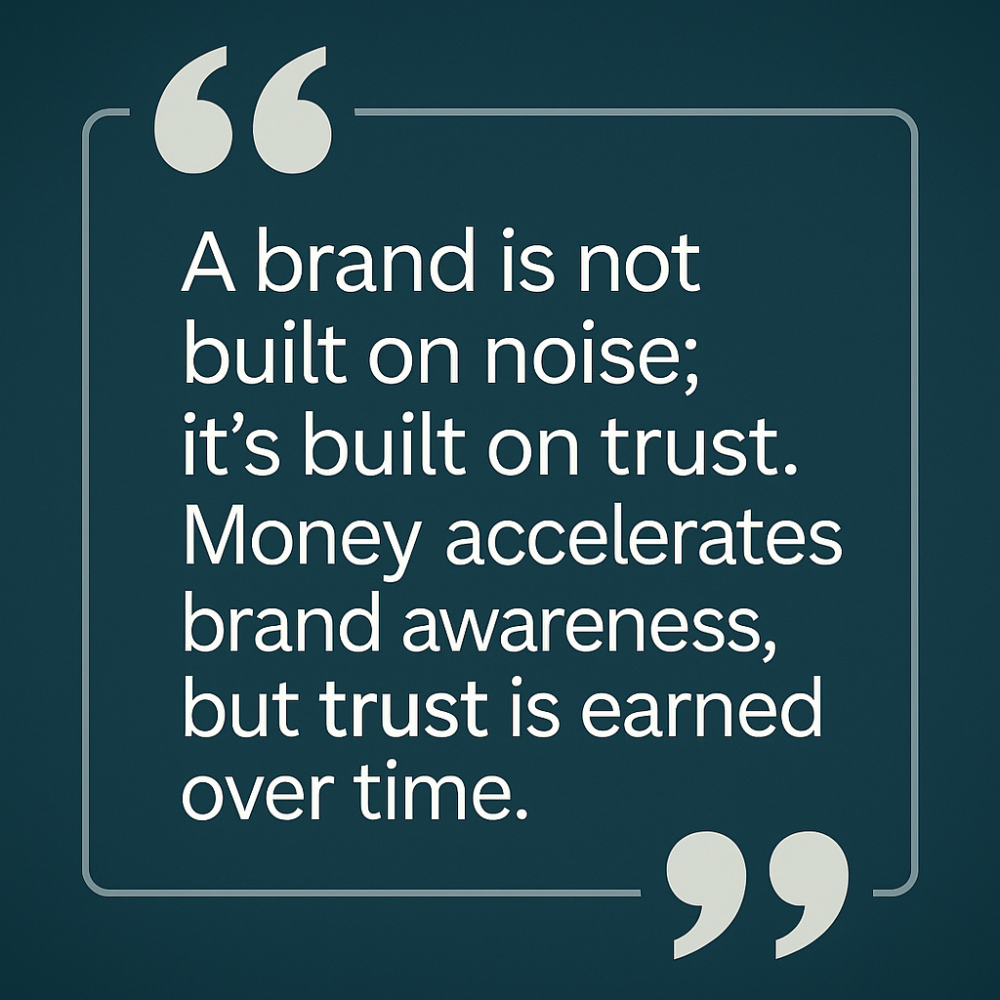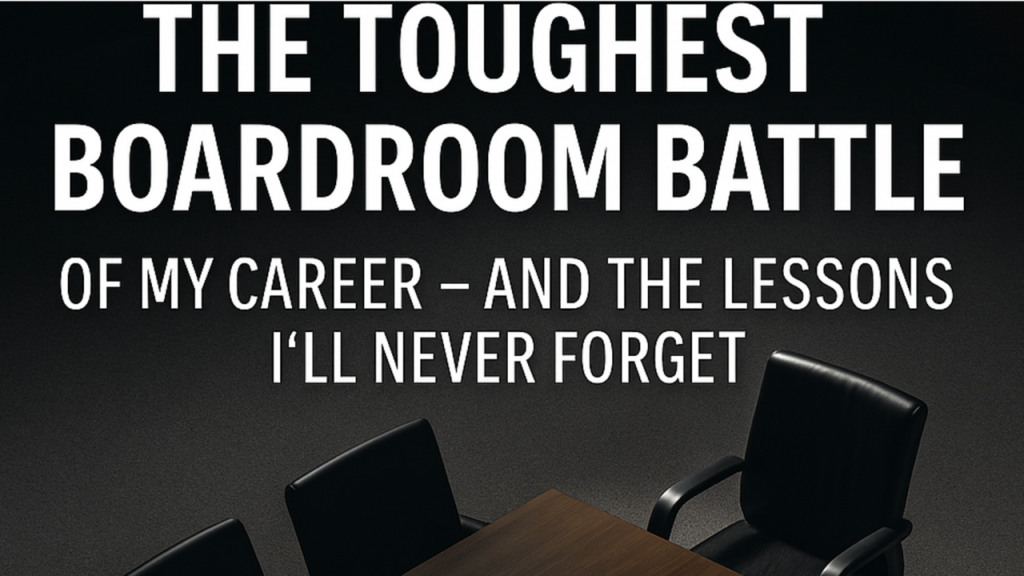Building a brand isn’t for the faint of heart. It’s a slow, deliberate process built on trust, consistency, and relentless focus. But what happens when your board doesn’t see it that way? What happens when they demand you grow a brand overnight—and measure you against companies spending 100 times your marketing budget?
This is the story of the toughest board meeting of my career. It was over the topic of branding, and it taught me lessons I’ll carry for the rest of my professional life.
The Setup: A Classic David vs Goliath Market
We were retained to manage the entire marketing function for a company in the booming “big data” space. The market was barely a few years old, but already crowded with multi-billion-dollar competitors. Amazon Web Services, Microsoft, and other tech giants had first-mover advantage and marketing budgets that dwarfed ours.
Our company had just raised a $20 million Series A. No massive war chest. No big media budgets. But we had a clear strategy.
We implemented highly focused messaging and precise demand generation campaigns. We targeted buyer profile — companies that were born in the cloud and highly motivated to compete for top engineering talent. Rather than try to outspend the giants, we carved out a specific space in the market, aligning the company’s message with the worldview of its founders and a very targeted buyer profile.
It worked.
– Analyst firms began to take notice—without us paying the typical “entrance fees.”
– Press coverage grew steadily.
– Customer count rose from 19 to over 100.
– ARR climbed from under $1 million to over $10 million, then leapt toward $100 million.
But despite our success, tensions with the board began to simmer.
The Clash: When Branding Expectations Become Unrealistic
Two issues surfaced that didn’t sit well with investors:
1. Our success was largely with “digital native” companies—born after the dot-com era—not the traditional enterprise giants. An enterprise sales path, the methodologies and the staffing to support it was a great departure from the path that had empirically demonstrated success for the company.
2. In their eyes, our brand wasn’t growing fast enough.
In just 2.5 quarters, they expected us to stand shoulder to shoulder with Amazon and Microsoft in the enterprise space. It didn’t seem to matter that their marketing budgets were 100x ours. Would “building a brand” inorganically even move the needle if the goal is really to shift to Enterprise sales? Is this the best thing to do if we are going to pivot? Or is it a rabbit hole distraction?
That’s when I was called to a special board meeting—one focused entirely on marketing.
The conversation turned heated. The prevailing view seemed to be that brand building was simply a matter of spending more and expecting faster results. I reminded them:
“A brand is not built on noise; it’s built on trust. Money accelerates brand awareness, but trust is earned over time.”

And then it happened.
An influential board member stopped the room cold and said something I’ll never forget:
“You need to take lessons from ISIS. Look how quickly they cemented their name in all our heads!”
We sat in stunned silence. In that moment, it was painfully clear—this was a fundamental misalignment of values and philosophy.
The Aftermath: When Strategy Meets Reality
Back at work, we doubled down on business fundamentals and continued to grow.
To support a move into the enterprise space, I hired a data analyst to build an AI model that ranked the top 5,000 corporations in North America by data maturity. Our analysis identified just 423 companies realistically capable of buying our product.
Unfortunately, those were the exact targets our competitors had locked onto—and they had the firepower to outgun us. Meanwhile, AWS began developing a competitive offering aimed directly at our market.
I initiated backchannel discussions with a major competitor who saw strategic value in acquiring us. They were reportedly considering an acquisition at a 20x multiple of our raised capital.
But when the offer was quietly floated, the CEO reportedly dismissed it outright, saying:
“Why would you want to be here if it’s not to build a public company?”
I prepared a final strategic analysis, mapping out the likely moves of all major industry players using game theory. The conclusion was clear: Without a partnership or acquisition, the company would face insurmountable odds.
I sent my final recommendation, respectfully warning that we didn’t believe this was a viable path to an IPO or a major exit.
The CEO’s response?
“It’s not the CMO’s business to advise on company direction. And by the way, the board still doesn’t believe you built the brand fast enough.”
The next day, we submitted our 30-day termination notice.
The Epilogue: And Then, the Endgame
The company went on to raise another $60 million over the next several years. Four years and 11 months after I submitted that final strategy memo, the company was acquired—reportedly for $77 million, plus debt.
Less than the $100 million threshold I had warned about.
Lessons I’ll Never Forget
1. Ensure Marketing Has a Seat at the Strategic Table.
Marketing isn’t just tactical execution—it’s fundamental to business strategy. If leadership doesn’t see that, your impact will always be limited.
2. Interview the Board Before You Say Yes.
Understand their expectations and alignment before you take the job. Their goals may not be purely about shareholder value.
3. Trust the Math, Not the Myth.
Emotion and ego are dangerous drivers. Data and disciplined strategy should win the day.
4. Never Look a Gift Horse in the Mouth.
Sometimes the best deal is the one right in front of you. Not every company is destined to IPO glory.
Would I make the same decision again? Absolutely. I’ll take a hard-earned lesson over a soft landing any day.






